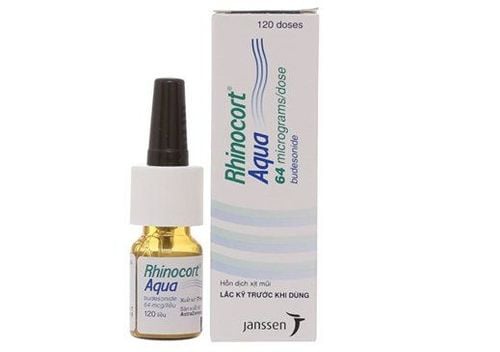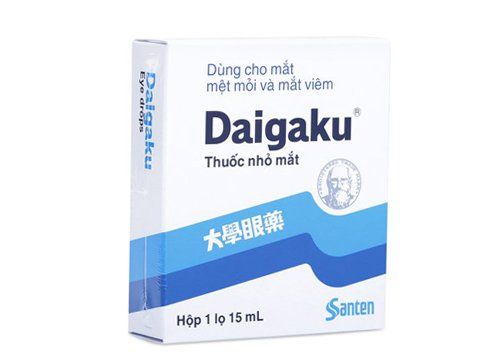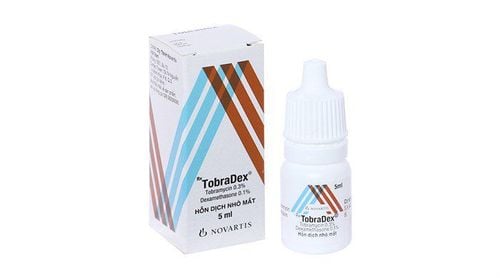This is an automatically translated article.
Currently, the H1 receptor group of antihistamines is widely used, especially in patients with allergic rhinitis. One of the active ingredients in this group is the drug Terfenadine. What is Terfenadine and how should it be used?
1. What is Terfenadine?
Terfenadine is an active ingredient in the class of antihistamines, competitively antagonizing the H1 receptor. The drug Terfenadine is chemically similar to Astemizol and Haloperidol, a butyrophenone antipsychotic. After entering the body, Terfenadine will be converted to the active form of fexofenadine. In the US, terfenadine was completely replaced by the product fexofenadine in the 1990s due to the risk of cardiac arrhythmias associated with prolongation of the QT interval on the ECG.The specific mechanism of action of Terfenadine is as follows:
Competes with histamine for binding at H1 receptor sites in the gastrointestinal tract, large blood vessels, bronchial muscles and uterus; Terfenadine's ability to reversibly bind at the H1 receptor site will prevent the symptoms of edema and itching caused by chemical mediators; Because the ability to cross the blood-brain barrier of the drug Terfenadine is not easy, the CNS depressant effect of the drug is very low, insignificant.
2. Indications and contraindications of the drug Terfenadine
Terfenadine in most cases is commonly used to treat allergic rhinitis, which may be accompanied by fever and allergic skin manifestations.
In addition, in some cases, Terfenadine can be used to support the relief of allergy symptoms as follows:
Itchy eyes, watery eyes; Sneezing, runny nose; Itchy; Manifestations of irritation. Some contraindications to the use of Terfenadine:
History of known allergy to Terfenadine or other antihistamines; Hypersensitivity to any of the other ingredients in Terfenadine.
3. Instructions for using the drug Terfenadine
Patients use Terfenadine by mouth, with a sufficient amount of water.
Dosage of Terfenadine depends on each specific case, between different patients, the dose will be different and specific as follows:
People over 12 years old and weighing over 50 kg: Use 60 - 120mg/day , drink only 1 time in the morning; Or can take 60mg / time, 2 times per day; The maximum dose is 120mg/day; Renal impairment: If creatinine clearance is less than 40 ml/min, it is recommended to reduce the dose to 1⁄2 of the usual dose.
4. Terfenadine side effects
Besides the therapeutic effects, the use of Terfenadine can lead to some unwanted side effects. This is a problem that many users feel worried about because of concerns about health effects. Accordingly, some common side effects during taking Terfenadine include:
Feelings of anxiety, nervousness, palpitations; Sleep disorder , the most common is insomnia ; Symptoms of mild gastrointestinal disorders; Skin erythema multiforme; Abnormal lactation in females (galactorrhoea). Some rare cases of using Terfenadine and experiencing more serious side effects are as follows:
Ventricular arrhythmias, including torsades de pointes; Palpitations, heart palpitations; Dizziness, fainting, or even convulsions caused by an arrhythmia; Hepatitis ; The most serious is death.
5. Some drug interactions of Terfenadine
Antifungal Triazole and Imidazole; Macrolide antibiotics, such as erythromycin, azithromycin...; antibiotic streptogramin; Selective serotonin reuptake inhibitors; HIV protease inhibitors; Reverse transcriptase inhibitors; In addition, Terfenadine may interact with antiarrhythmic drugs when used concurrently.
6. Some notes when using Terfenadine drug
Extreme caution should be exercised when using Terfenadine in special populations such as children and the elderly; Limit and preferably do not prescribe Terfenadine to patients with a confirmed diagnosis of cardiovascular disease or liver disease. In addition, caution should be exercised when terfenadine is administered to patients with electrolyte disturbances or imbalances or in the presence of accurate/suspected ECG prolongation of the QT interval. Pregnant women and lactating women should be cautious of the following issues: This subject needs to be carefully considered before using Terfenadine, in which the therapeutic benefits for the mother must be ensured in addition to the risks and harms. for fetal and breast-feeding health; The use of Terfenadine must ensure its effectiveness and absolute safety. Therefore, patients need to inform their doctor about their health status, thereby receiving appropriate advice on whether to take Terfenadine or not and at what dose to ensure safety. .
Use Terfenadine with caution when driving and operating machinery:
Headache and dizziness when using Terfenadine are very rare, but still recorded in a small number of patients; Therefore, extreme caution should be exercised when terfenadine is administered to patients who require a high degree of concentration while working, such as when driving a vehicle or operating complex machinery.
7. What to do when you miss a dose of Terfenadine
The patient needs to take the medicine as soon as he remembers it; If the missed dose is close to the next dose of Terfenadine, no need to make up for it, but take it at the usual schedule; Never take a double dose of Terfenadine on your own to make up for the missed dose. Experts recommend ways to store Terfenadine as follows:
Keep Terfenadine out of reach of children and pets; Store Terfenadine in a cool, dry place, away from direct sunlight or in a humid place; The best storage temperature is from below 25 degrees Celsius; When Terfenadine has signs of mold or changes in color, it is absolutely not used. In addition, once the medication has expired, it should be disposed of properly.
Please dial HOTLINE for more information or register for an appointment HERE. Download MyVinmec app to make appointments faster and to manage your bookings easily.













